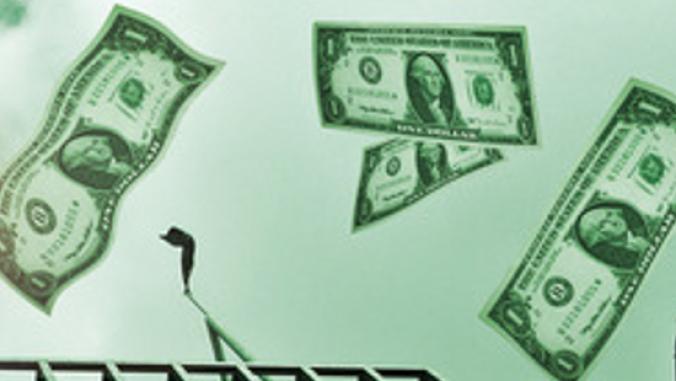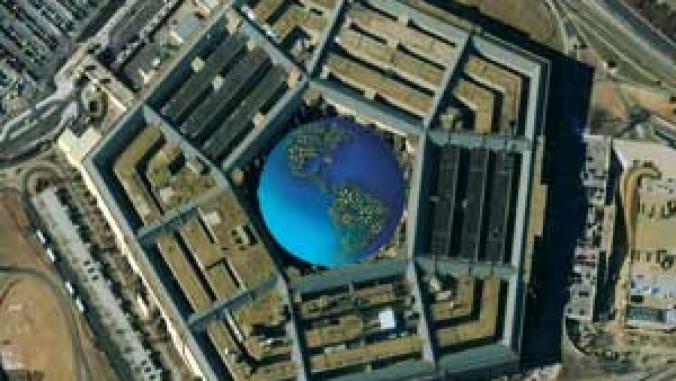How to Beat Climate Change Through 'Coopetition'
<p>Helping one another is really the way things get done green-wise, and the only way we will solve our "you-bet-your-species" proposition of unmanageable climate change. We need to foster "coopetition" where people work together to hit a target.</p>

I'm stuck indoors here in Shanghai with the flu (getting better, thank you...) and one of my concerned staff members went out shopping for food and cooked me a delicious meal "to help you get rid of your extra fire." I was really touched by his concern and it dawned on me that helping one another is really the way things get done green-wise, and the only way we will solve our "you bet your species" proposition of unmanageable climate change.
As the Zen master once admonished his student: Everything you need is right in front of you. Let's call it the Grasshopper Principle.
Don't get me wrong; I'm not suggesting everyone get all dewy-eyed and kumbaya all the time (just occasionally). Rather we should foster a "coopetition" where people work together to beat a target, which is exactly what the Green Schools Alliance's Green Cup Challenge does with K-12 schools. Tom Friedman just wrote about this "network" model being used extensively by leading companies in China.
{related_content}PepsiCo's now zero-waste Walkers plant in Leicester, England, is a great example. In just over a year, the site eliminated or diverted over 30 tonnes of waste per month. How, you might ask? Quite simply, plant management engaged the staff to work toward this very challenging goal and gave them responsibility, appointing "waste marshals" from within their ranks. As PepsiCo notes, "The enthusiasm of front-line employees has been a key driving force for reducing absolute landfill waste."
When I was a grad student at UC Berkeley's Energy & Resources Group, I learned about the "Art Rosenfeld effect," where Art would go around after hours and shut off lights -- obviously this was before the age of occupancy sensors. The amount of energy he saved each year paid for his salary and more! I did the same thing in the New York office of NRDC and you could really tell from the energy bills when I was in the office and when I was traveling in Russia and no, it didn't cover my salary, thank God.
Here's a radical idea for your workplace: Appoint someone to regularly hunt for energy waste and with the monthly savings treat everyone to pizza and beer -- or wheatgrass and mochi on the West Coast. This way there's something in it for everyone and it's not about Big Brother watching you.
Do the same thing for your building's operations staff and be creative. Maybe
instead of a small monthly get-together, you have a shindig at a nice place at the end of the year where people get awards for their efforts. Most people -- not all, sadly -- WANT to do something to make the world a better place and enthusiastically embrace the opportunity.
The effectiveness of simple measures was one of the six "surprises" that Leanne Tobias discovered during the writing of her new ULI book, "Retrofitting Office Buildings to be Green and Energy-Efficient." One caution about focusing only on these high-payback strategies, which is echoed by Scott Muldavin, is that they make the more complex retrofits seem much more expensive. It's a lot easier to finance a package of longer and short payback measures than it is to just do long-payback retrofits.
Other examples of the Grasshopper Principle include "The Ionator" from Activeion Cleaning Solutions LLC. Ionized water, as it turns out is great at a lot of things, including killing H1N1 viruses dead. It's much more effective than the fancy chemistry used in many cleaning products, and a lot cheaper too. This is why UGL Unicco, BMS Building Services and others are increasingly switching to this product as part of their repertoire.
Going out on a limb, I'll also lump in the 2009 Recovery Act Tax Credits. Though the whole stimulus mess is a counterpoint to the coming together theme of this piece, there is no doubt that investing in green technologies at home, whether from U.S. or foreign companies, is a good example of working with what's in front of you. The White House recently announced a $2.3 billion tranche of green investments from the total of $7 billion allocated toward this space. Solar and wind were the big winners, but almost $150 million of the funds went to buildings-related investments. Amongst the behemoths of GE and Dow, upstarts like Cree and CalStar Products also received nice awards.
This week's Look-Grandpa-I-picked-up-the-$20-bill-you-said-was-fake-but-it's-real! award goes to the California Building Standards Commission for last week's adoption of CALGREEN, which is anticipated to result in 3 million metric tons of CO2 reduction in 2020. I urge the BSC and the many parties worried about market confusion between CALGREEN, LEED, Build It Green and other systems to work together to educate the market about the respective niches of voluntary and mandatory standards and how they can complement each other. Confusion exists only if you let it.
Rob Watson is the executive editor of GreenerBuildings.com. You can reach Rob at [email protected] or follow him on Twitter @KilrWat.
Image CC licensed by Flickr user bhansley.





